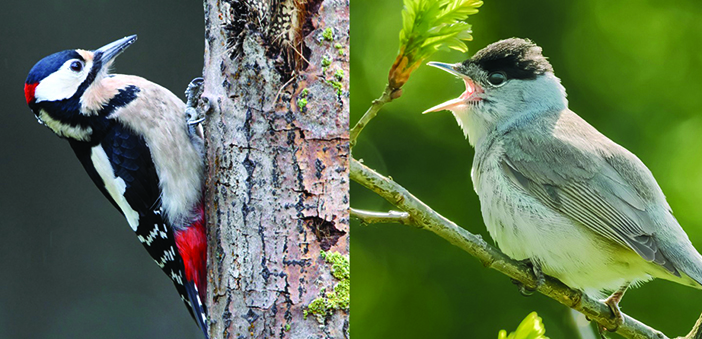New research at Brown finds that drumming is neurologically similar to singing in other birds.
While a woodpecker’s bill-hammering is a familiar sound—and sometimes too familiar, for those who’ve had a woodpecker take up residence in their yard—the mechanisms and motivations driving the birds to engage in this behavior haven’t been well understood.
Until now.
A team of researchers led by a Brown University biologist has discovered new insights into how the woodpecker’s brain works. The discovery suggests their drums may have evolved through vocal learning, which is the same way that songbirds learn to make their own more melodious sounds.
In a study published in PLOS Biology, the researchers describe how they found evidence of specialized gene expression in the forebrains of woodpeckers that was anatomically similar to that of birds who communicate by singing. The researchers hypothesize that the same brain mechanisms that helped birds develop the motor control involved in creating and voicing songs is also what helped woodpeckers develop their drumming system of communication.
This discovery expands what is known not just about woodpeckers, but about the evolution of birds in general, says study author Matthew Fuxjager, PhD, an associate professor of ecology, evolution, and organismal biology with the Division of Biology and Medicine.
“Very little is actually known about woodpecker drumming to begin with, and certainly nobody has ever found a neurological explanation for the drumming behavior,” Fuxjager says. “More broadly, what’s really exciting about this study is that this is the first time a neural basis has been found for gestural communication of any animal—outside of humans, chimps, and gorillas, that is.”
Much of the research on animal communication focuses on vocalizations, he says—for example, frogs calling or birds singing. In his research, Fuxjager studies how animals use body movement and gesture to communicate, such as jumping up and down, waving, or performing a type of ritualized dance.
“A lot of my research has looked at how these movement behaviors have evolved—specifically, how the brain and muscles have evolved together to support these types of displays,” he says.
Woodpeckers, he says, are an excellent candidate for area of inquiry because their hammering is a form of signaling. “With the hammering, the woodpeckers are basically telling each other, ‘Get out of my territory!’” he says.




